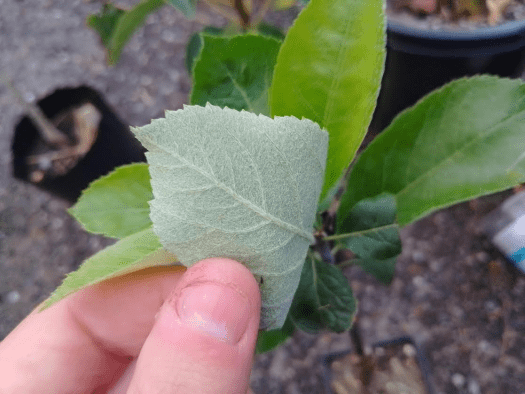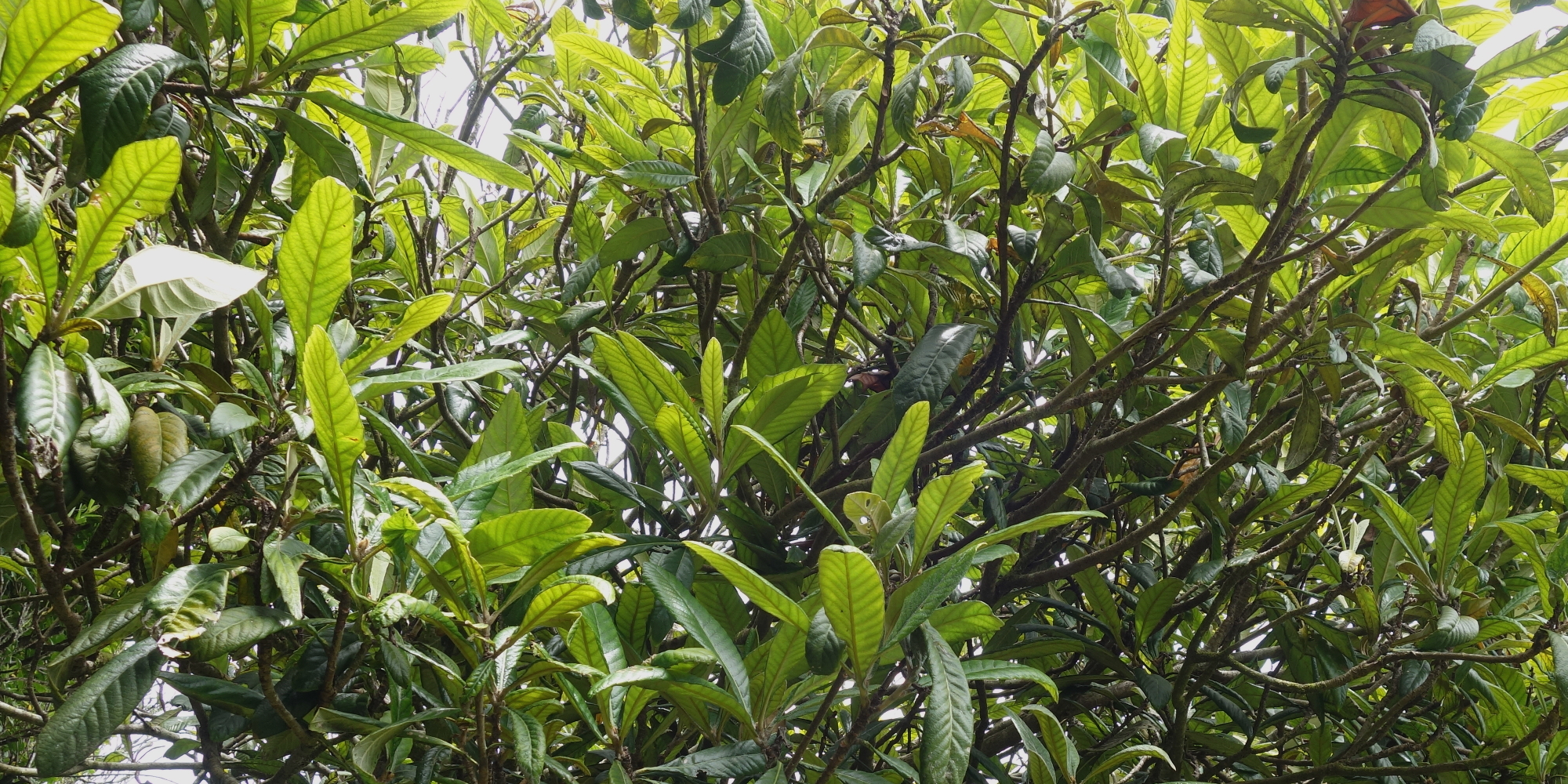Shipova (x Pyraria irregularis, formerly x Sorbopyrus irregularis) is an incredibly unusual, intergeneric hybrid plant. It arises from a cross between a European pear (Pyrus communis) mother and a whitebeam (Aria edulis, formerly Sorbus aria) father. It is a triploid, with two chromosomes from pear and one from whitebeam. Most of the people I’ve spoken to in New Zealand have never heard of whitebeam, as it’s not widely grown in New Zealand (it is grown occasionally as an ornamental on the East coast of the South island). Whitebeam is native to Europe where it is an important component of the temperate forests, supporting birds with it’s large crop of berries late in the season. The whitebeam family is extremely interesting in it’s own right, and I will write further articles about them.

I had been fruitlessly looking for the shipova in New Zealand for well over 6 years, asking most of the tree crop experts, most of which had never heard of it, let alone knew where to find one. I believed it was probably not present in New Zealand, and would essentially never be here as it’s too expensive for most people to import live plant material for niche crops.
However, about a year ago, I found a written record for a plant in a botanic garden in the North island. I was almost in disbelief when I found the record, how could it be there, growing quietly all this time? In February 2024 I was able to visit the plant itself. To protect the original tree, which is in somewhat of a precarious state, I will not describe the location where it is growing. In exchange for the permission to propagate the shipova, I have grafted replacement plants for the botanic garden. Shipova is now being actively propagated and will re-enter cultivation for all New Zealanders to be able to grow.
For those who know of the shipova, it is an almost mystical fruit from nearly the limits of traditional plant hybrids. It was first found in 1599 between its parent trees in the castle garden of the Barons of Bollwiller, in Bollwiller, France. It is also known as Poire de Bollwiller (Bollwiller pear) as a result. Seeds are rarely produced, and almost all are sterile, so it has been mostly propagated by grafting.
The fruit are the size of a small pear, developing an attractive red blush on the side facing the sun. The fruit texture is creamy and a bit gritty. The taste has a rich bouquet of new flavours inherited from the whitebeam side of the family, the ripe fruit tasting very sweet with tropical fruit notes (variously described as mango, pineapple or guava). As the fruit ages, the flavours intensify and a strong marzipan (!) comes to the fore.

The tree itself is naturally dwarfing and does not require pruning in general. In exchange for the tree being naturally dwarfing, it is also generally late to bear. The leaves are very curious, as while they are roughly the same shape as a pear leaf, they are covered in a fine downy layer of hairs, and the underside of the leaf is silvery white as a result. The petiole stems also do not have the red pigment that most European pears do.


The shipova seems to perform quite variably as a fruit crop. There are a reports that it is slow to come into bearing, and that trees are not disease resistant.
There is a report from Europe of a tree that fruited at a very young age. I asked the nursery which provided this particular shipova plant, and they said it was either quince or European pear seedlings they used as rootstock.


A report from the wetter Pacific Northwest coast (somewhat similar to the climate of the West Coast in New Zealand) is quite glowing:
In defense of Shipova, I’ve found it a perfect fit for the super-wet, fungal-prone climate of the PNW. No scab, ripens on tree, skin is tender, with a soft butterscotch flavor. Along the way, I had a setback that exemplifies the tree’s tolerance of wet growing conditions. At year 5, with standing water on the ground for about a week, the 15’ tree started leaning. One branch reached the ground, re-rooted, and sent up a new leader. The tree looked ridiculous with 2 leaders about 90 degrees apart! But by year 9 the tree started coming into production and each year thereafter the two leaders have been loaded with fruit.
In hopes of jump-starting another tree, I bark grafted top onto an established European pear (lost variety tag) that was totally scab prone. The graft took but growth was minimal ( 6″) so will have to see this spring whether this union is compatible.
Even pears that are supposedly scab-tolerant e.g. Orcas, Rescue, Highland develop scab here, so I’m happy to have a care-free pear.
This report of shipova in the PNW gives us a lot of hope for success in the West Coast climate.
In terms of rootstocks, I have tried Callery pear (Pyrus calleryana), Chinese hawthorn (Crataegus pinnatifida), rowan (Sorbus aucuparia) and quince (Cydonia oblonga). The quince rootstocks were terrible condition, tiny suckers, and were grafted in the heat of Summer, so I can’t blame them for failing.
The P. calleryana seedlings and C. pinnatifida seedlings have both performed excellently so far, with high vigour growth for each. Curiously, the leaf shape seems to be partially determined by the rootstock, with the shipova on P. calleryana having a normal pear leaf shape, while the shipova on C. pinnatifida having deep teeth reminiscent of the rootstock’s leaves itself.

Well that about sums things up for now. We hope to fruit the shipova within the next few years to confirm what the fruit looks like in New Zealand.
References
- Johannes Bauhin: Historia plantarum universalis, nova et absolutissima cum consensu et dissensu circa eas. Quam recensuit et auxit Dominicus Chabraeus. 3 volumes. 2nd edition ( Juris vero publici fecit Franciscus Ludovicus a Graffenried. ) Yverdon 1650–1651, Volume 1, p. 59.
- https://uncommonfruit.cias.wisc.edu/shipova-bollwiller-pear/
- Marius Poenariu – personal communications
- De Moerbeiboom – personal communications
- https://growingfruit.org/t/shipova-flower-buds/10438/6
